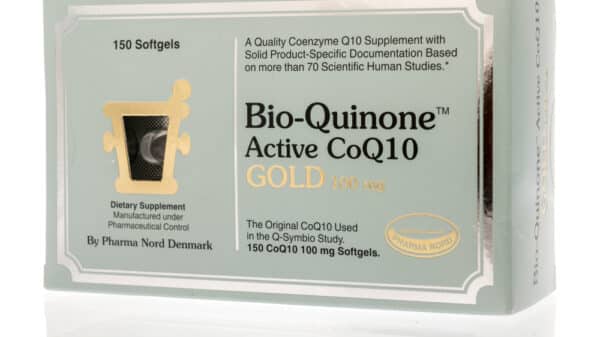Soy sauce has long been a beloved staple in kitchens around the globe, cherished for its rich umami flavor that enhances a variety of dishes. For those who need to avoid wheat, however, traditional soy sauce may not be the ideal option. Good news! There are alternatives like tamari and liquid aminos that provide a similar flavor boost without the gluten. If you’re scratching your head wondering what liquid aminos are and how they stack up against soy sauce, you’re in the right place.
We took a closer look by talking to an expert dietitian and a seasoned chef. Together, we’ll delve into the nuances between liquid aminos and soy sauce—their flavors, health perks, and more.
What exactly are liquid aminos? According to Max Kamakura, executive sushi chef at Queen Omakase in Miami Beach, liquid aminos are culinary seasonings derived from either soybeans or coconut sap. When made from coconut, these products are often called coconut aminos. The process involves soaking soybean proteins or coconut sap in acid, which helps extract amino acids—essential components of protein. This mixture is then diluted with water to create a savory seasoning that’s gaining popularity.
Marketed as a healthy alternative to soy sauce and other seasonings, liquid aminos promise to be gluten-free, making them a safe choice for individuals with celiac disease or gluten sensitivities.
Turning our attention to soy sauce, it’s important to note its origins. This classic condiment is crafted by fermenting soybeans and wheat with saltwater and mold, a process that harks back to China but has since spread throughout East and Southeast Asia. Each region puts its unique spin on this beloved ingredient, with Japanese shoyu being one of the most well-known varieties, available in different shades—light, dark, and white.
So what sets liquid aminos apart from soy sauce? While these two might seem interchangeable at first glance, key differences lie in their ingredients and flavor profiles. Danielle VenHuizen, a Seattle-based registered dietitian, points out that soy sauce is fermented, which gives it a complex umami flavor profile. On the other hand, liquid aminos provide a milder, savory flavor that can be slightly sweeter, thanks to the absence of fermentation.
When it comes to nutrition, both liquid aminos and soy sauce bring some benefits to the table. They contain antioxidants and nutrients, including B vitamins and potassium, alongside small amounts of protein. Surprisingly, their sodium levels are similar—around 300 milligrams per teaspoon, though this can vary by brand and whether a low-sodium option is chosen. It’s worth noting that while both are low-calorie options, liquid aminos have the edge when it comes to being gluten-free and suitable for individuals avoiding wheat.
Now, you might be thinking about how to incorporate these condiments into your cooking. Kamakura suggests that liquid aminos can be used as a direct substitute for soy sauce. However, he emphasizes that the choice between the two often comes down to the recipe and personal taste preferences. For instance, in his Japanese dishes, he typically opts for traditional soy sauce, adjusting the amount based on the dish. If guest preferences call for gluten avoidance, a gluten-free soy sauce made from rice becomes his go-to, ensuring a similar flavor while catering to dietary needs.
On the flip side, liquid aminos shine in recipes that need a gentler umami flavor—perfect for those less inclined to bold tastes. Their versatility allows them to enhance a wide range of dishes without overpowering other flavors, making them a fantastic option for both seasoned foodies and tentative eaters.
The question of whether liquid aminos are healthier than soy sauce is one that sparks debate. VenHuizen clarifies that while they’re touted as a healthier choice, it ultimately depends on individual dietary needs. Both contain high levels of sodium, so moderation is key. Notably, coconut aminos—a specific type of liquid aminos—boast a lower sodium content than their soy-based counterparts. According to the USDA, a tablespoon of coconut aminos carries about 450 milligrams of sodium, while liquid aminos can double that. Therefore, if you’re watching your sodium intake, coconut aminos may provide the best option.
Interestingly, some athletes are turning to liquid aminos as a pre- or post-workout boost to help with energy levels and fatigue reduction. Recent research suggests amino acid supplementation can support muscle recovery, but tuning into specific intake—often 7 grams or more—becomes essential. However, relying solely on liquid aminos could lead to excessive sodium consumption, underscoring the need for further research on their benefits for athletic performance.
When it comes to finding liquid aminos and soy sauce, many grocery stores now carry these products, ranging from specialty Asian markets to mainstream retailers. Choosing one over the other should hinge on personal taste and the dish in question.
“Soy sauce delivers a robust, saltier flavor, whereas liquid aminos tend to have a lighter, sweeter touch,” VenHuizen adds. No matter which you select, it’s essential to enjoy them in moderation. Their strong flavor guarantees you don’t have to use much, but it’s easy to overdo it and exceed daily sodium recommendations if you’re not careful.
So, whether you’re sprucing up a stir-fry or dressing a salad, these condiments have their place. Knowing you have options can open up exciting avenues for your culinary adventures while supporting your dietary preferences. Happy cooking!
































